Diving into Research
Research is at full swing at the Center for Marine Resource Studies in South Caicos. While most of our students are making their first experiences with research, our faculty is making a lot of progress on all fronts of research.
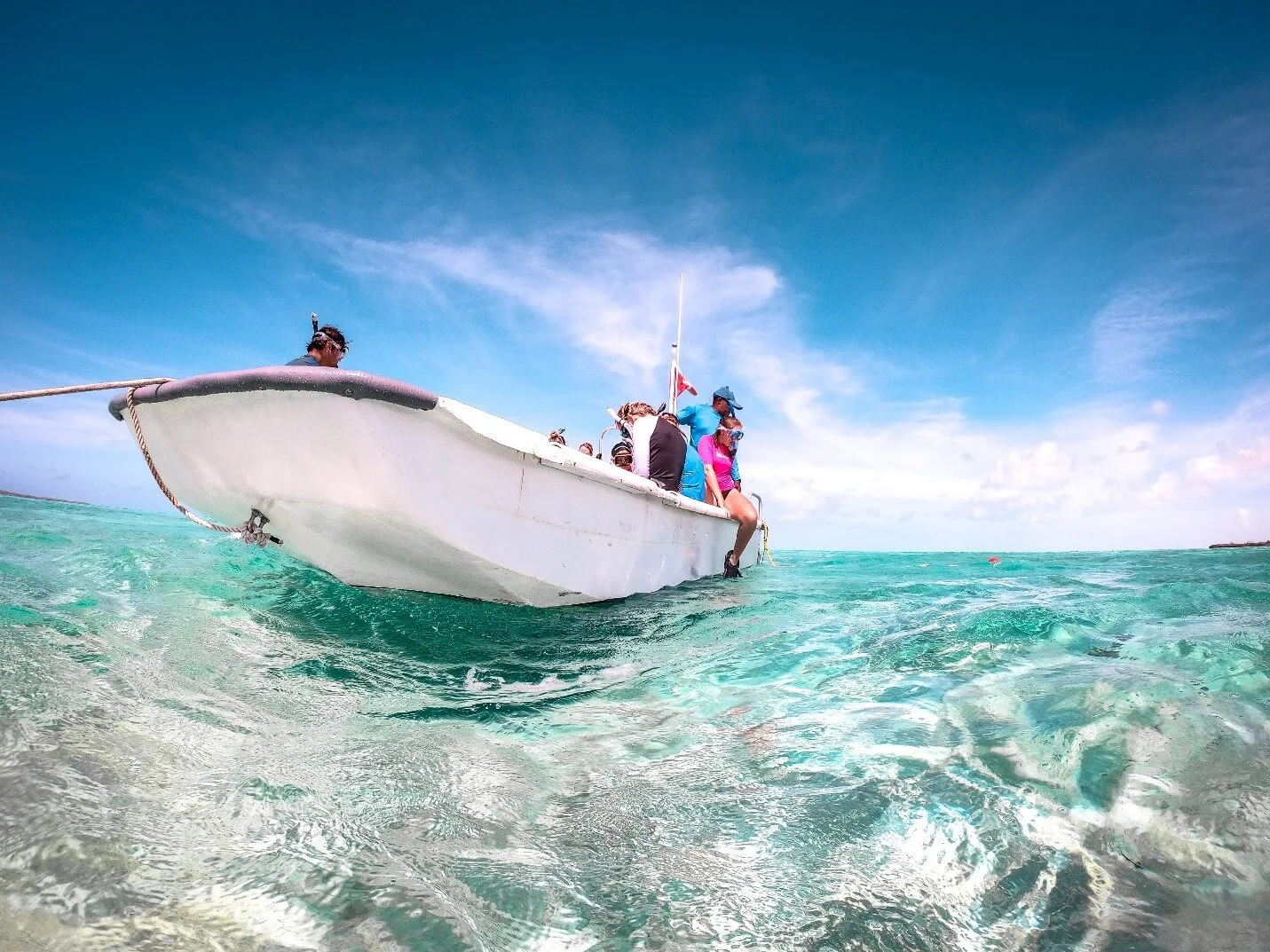
Students ready to jump in the water and do research. Photo courtesy of John DeBuysser
“For whom was this the first time laying a transect underwater?” Divemaster John DeBuysser asks after an successful afternoon monitoring conch in the conch and lobster reserve. Almost all students on the boat raised their hand. While the summer courses do not have a directed research course, the students still learn different research techniques. This Monday morning their first research report was due on the total economic valuation of the mangrove and seagrass habitat in East Bay. A few minutes after the submission deadline for this report, the first group of students is already gathering at the staging area. The destination for today: the East Harbour Conch and Lobster Reserve. The data they gather during these two full days of conch population monitoring will be added to the Center’s long term data on conch population and will feed into the chapter our Center is writing for the book Interactions between human communities and protected areas within the context of climate change that different SFS centers are working on together.

Student laying a transect during conch population assessment. Photo courtesy of John DeBuysser
Meanwhile our Center Director Heidi Hertler and myself are showing three visiting scientists from University of Greenwich the beaches of South Caicos. Not because of their beautiful white sand and turquoise water but to show them what washes up on them: Sargassum. Sargassum is floating algae (or sea weed) that has become super abundant in the Caribbean in the last few years. A Sargassum raft in the open ocean is an important habitat for juvenile fish and sea turtles as well as endemic species only found in these rafts. However, when it washes onto shore it emits hydrogen sulfide as it decomposes, is a major nuisance to the tourist industry and leads to destruction of seagrass beds. Debbie Bartlett and her two master students from University of Greenwich are visiting our center for 10 days to do research on alternative uses for the washed up Sargassum. This research project is funded by UK’s Darwin Plus Award Scheme and is a collaboration between the local Department of Environment and Coastal Resources, University of Greenwich and SFS CMRS.

Center Director Heidi Hertler helping students clear sargassum from a patch of the beach…let’s see how much has washed up a week later! Photo courtesy of Sylvia Myers
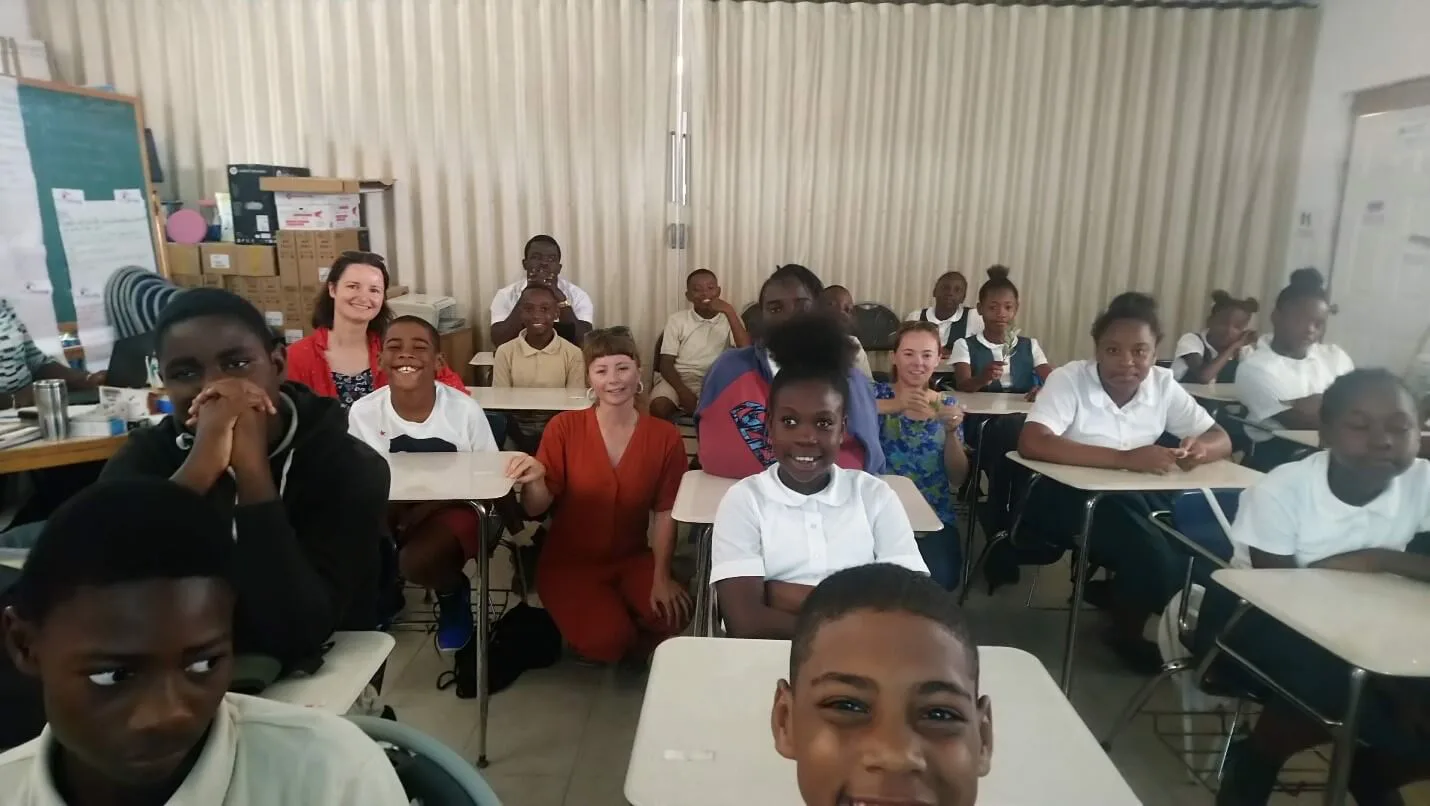
Student Affairs Manager, Katie Carr, visiting the local 6th grade class with students to talk about mangroves and sargassum. Photo courtesy of Francine Hutchinson
When Heidi is not helping on the Sargassum project, she is using her sabbatical to put finishing touches on papers she wants to publish. It seems like every day she exclaims that she finished a paper or an abstract. We are very happy that she can use her Sabbatical in such a productive way.
On top of all these activities, we also just received a fish with black spot syndrome from two local recreational fishermen. I have been studying black spot syndrome since 2012, when I was working as an intern for another field focused study abroad program in the Caribbean. In 2017, our research team on this disease started collaborating with Pieter Johnson from Colorado University in Boulder and his team. Their expertise in parasites enabled us to study the link between black spot syndrome and the trematode parasite Scaphanocephalus expansus which causes this disease in Bonaire, the Caribbean Island I worked on before moving to South Caicos. Until now only fish from Bonaire with black spot syndrome have been dissected to find out what parasite causes the black spots, so it is with much excitement that we received this fish as it will tell us what is causing black spot syndrome here in South Caicos. Since moving to South Caicos, I have conducted in water counts of fish affected with this disease with students and our Resource Management Faculty Ewa Krzyszczyk lead a directed research project on studying the behavior of fish with black spot syndrome.
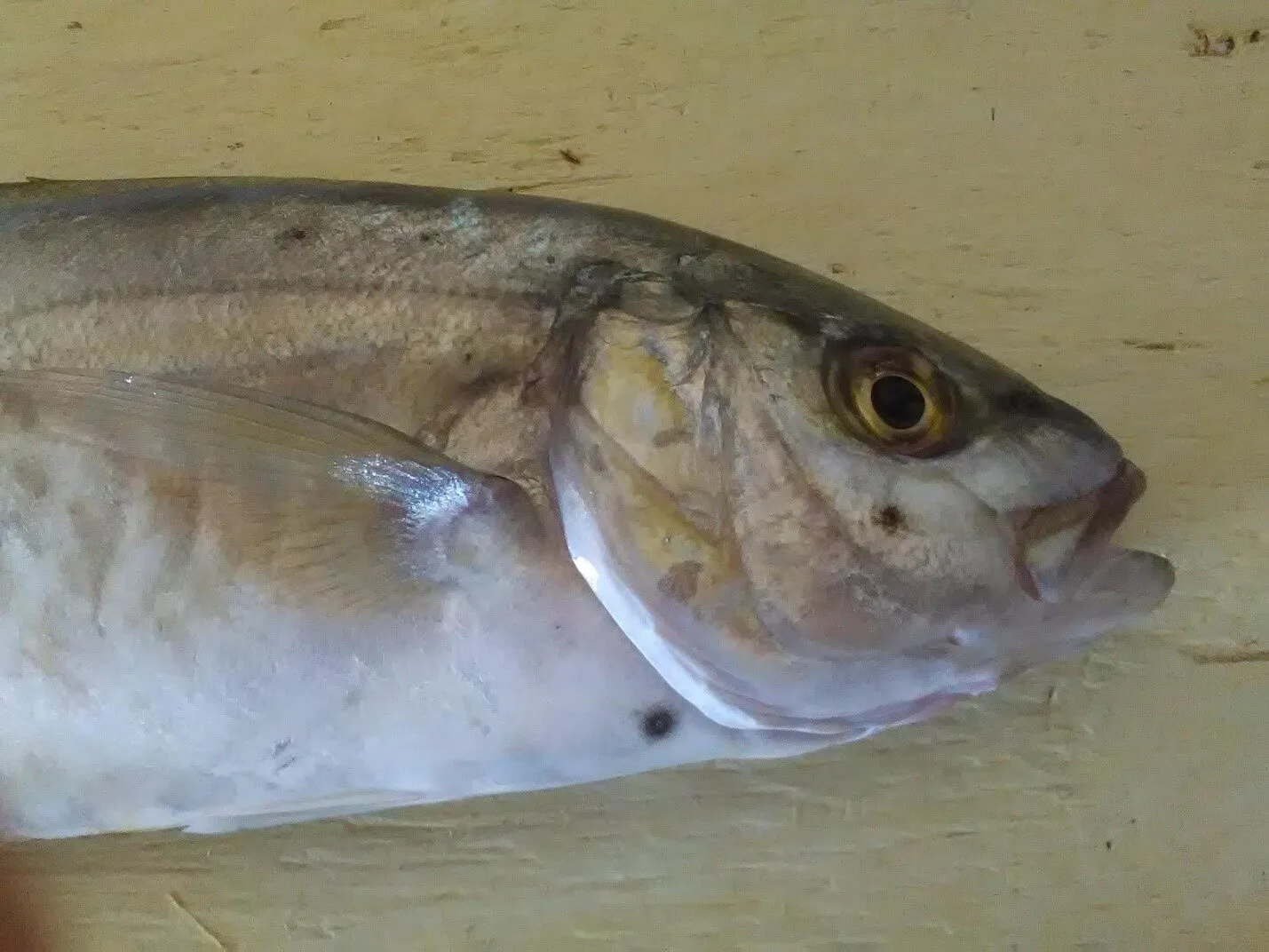
Bar jack with black spot syndrome, caught by local recreational fishermen. This fish will be analyzed for parasites by collaborators at Colorado University in Boulder. Photo courtesy of Franziska Elmer
But research will not die down after this week of high research activity. Next week the students will complete their final research assignment helping us monitor corals for bleaching and stony coral tissue loss disease. Stony coral tissue loss disease is spreading fast from coral to coral. Once a coral is affected, it’s tissue dies off over a few weeks or months leading to the death of the coral colony. We therefore are very grateful that we have a lot of helping eyes this summer participation in our monitoring of the disease. This monitoring will be enhanced soon. In the next few weeks, we will receive our trident underwater drone from National Geographic’s Open Explorer project. We will put it straight to use to find out how deep this new disease reaches on our reefs. We suspect bad news as we can see radiant white tissue when we peek down our reef wall during dives. Follow our deep reef expedition on National Geographic Open Explorer!
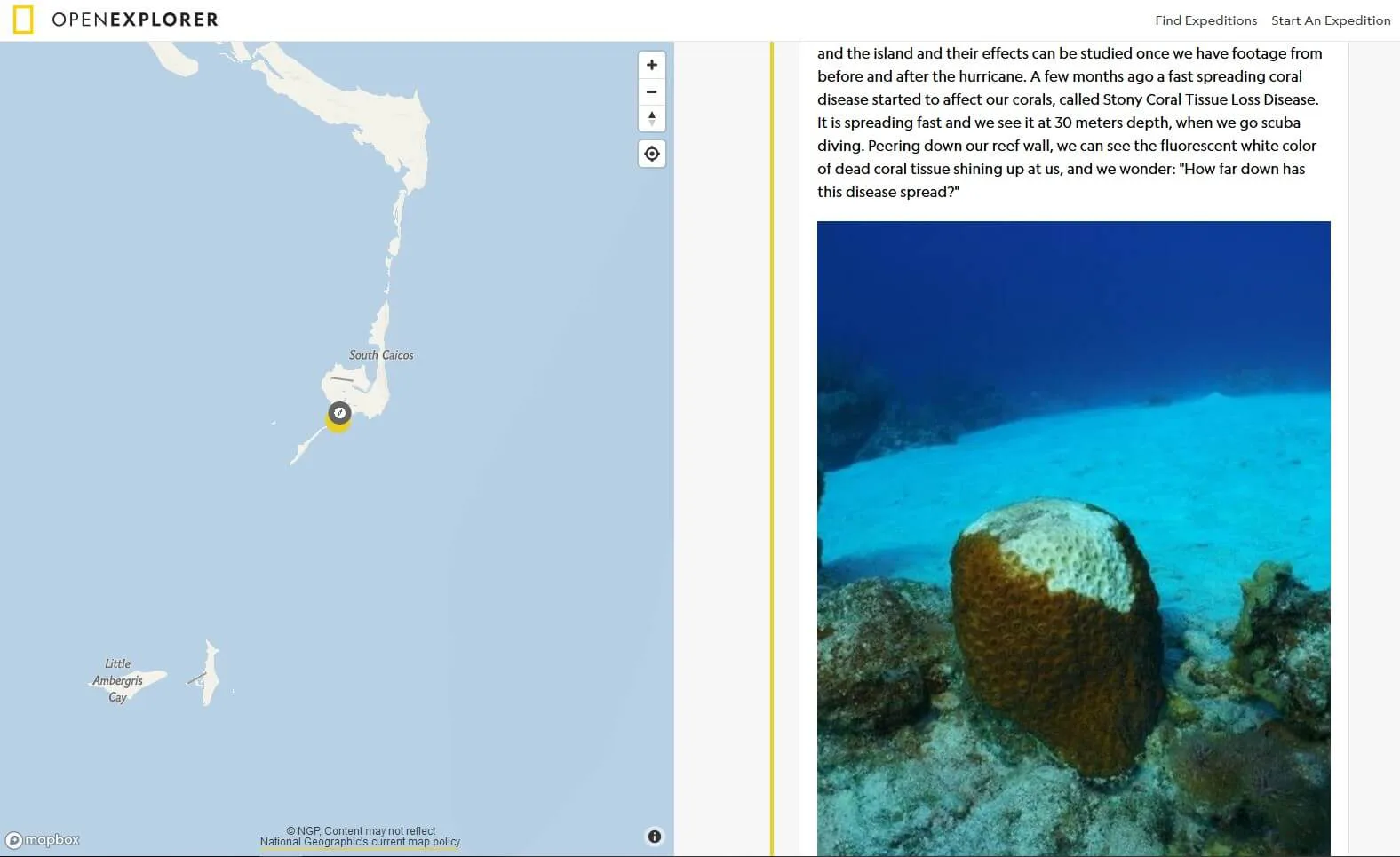
Check out our National Geographic Open Explorer page to stay up to date on our deep reef research!
→ Fundamentals of Marine Conservation in the Turks and Caicos Islands
Related Posts
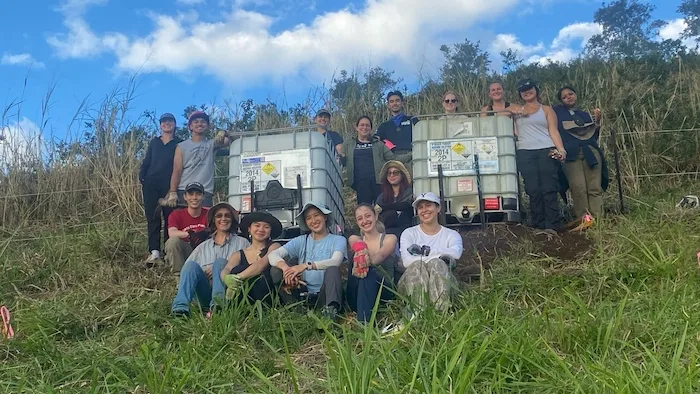
Restoration on a Cinder Cone: A Syntropic Story

